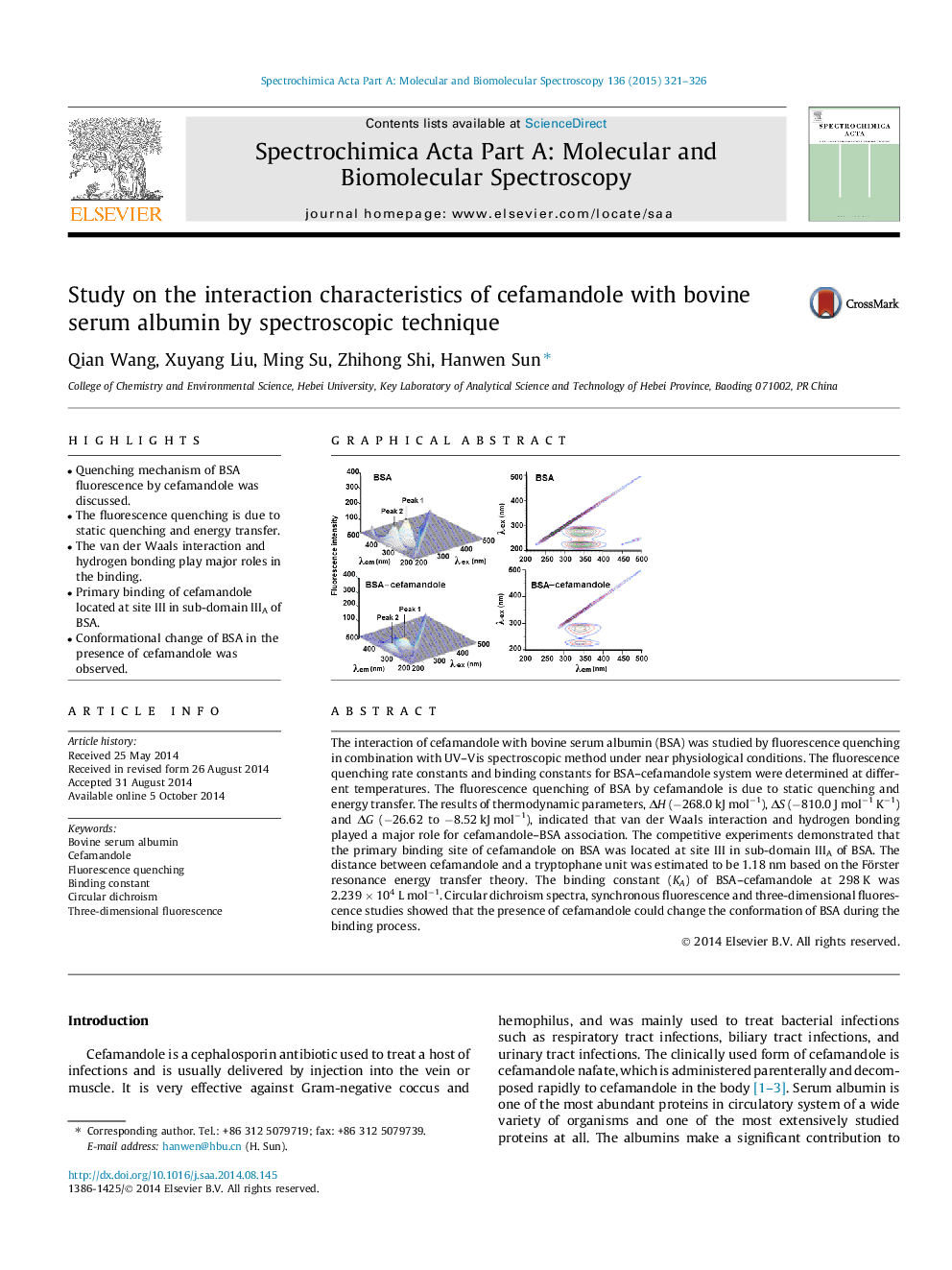| Article ID | Journal | Published Year | Pages | File Type |
|---|---|---|---|---|
| 1229441 | Spectrochimica Acta Part A: Molecular and Biomolecular Spectroscopy | 2015 | 6 Pages |
•Quenching mechanism of BSA fluorescence by cefamandole was discussed.•The fluorescence quenching is due to static quenching and energy transfer.•The van der Waals interaction and hydrogen bonding play major roles in the binding.•Primary binding of cefamandole located at site III in sub-domain IIIA of BSA.•Conformational change of BSA in the presence of cefamandole was observed.
The interaction of cefamandole with bovine serum albumin (BSA) was studied by fluorescence quenching in combination with UV–Vis spectroscopic method under near physiological conditions. The fluorescence quenching rate constants and binding constants for BSA–cefamandole system were determined at different temperatures. The fluorescence quenching of BSA by cefamandole is due to static quenching and energy transfer. The results of thermodynamic parameters, ΔH (−268.0 kJ mol−1), ΔS (−810.0 J mol−1 K−1) and ΔG (−26.62 to −8.52 kJ mol−1), indicated that van der Waals interaction and hydrogen bonding played a major role for cefamandole–BSA association. The competitive experiments demonstrated that the primary binding site of cefamandole on BSA was located at site III in sub-domain IIIA of BSA. The distance between cefamandole and a tryptophane unit was estimated to be 1.18 nm based on the Förster resonance energy transfer theory. The binding constant (KA) of BSA–cefamandole at 298 K was 2.239 × 104 L mol−1. Circular dichroism spectra, synchronous fluorescence and three-dimensional fluorescence studies showed that the presence of cefamandole could change the conformation of BSA during the binding process.
Graphical abstractFigure optionsDownload full-size imageDownload as PowerPoint slide
